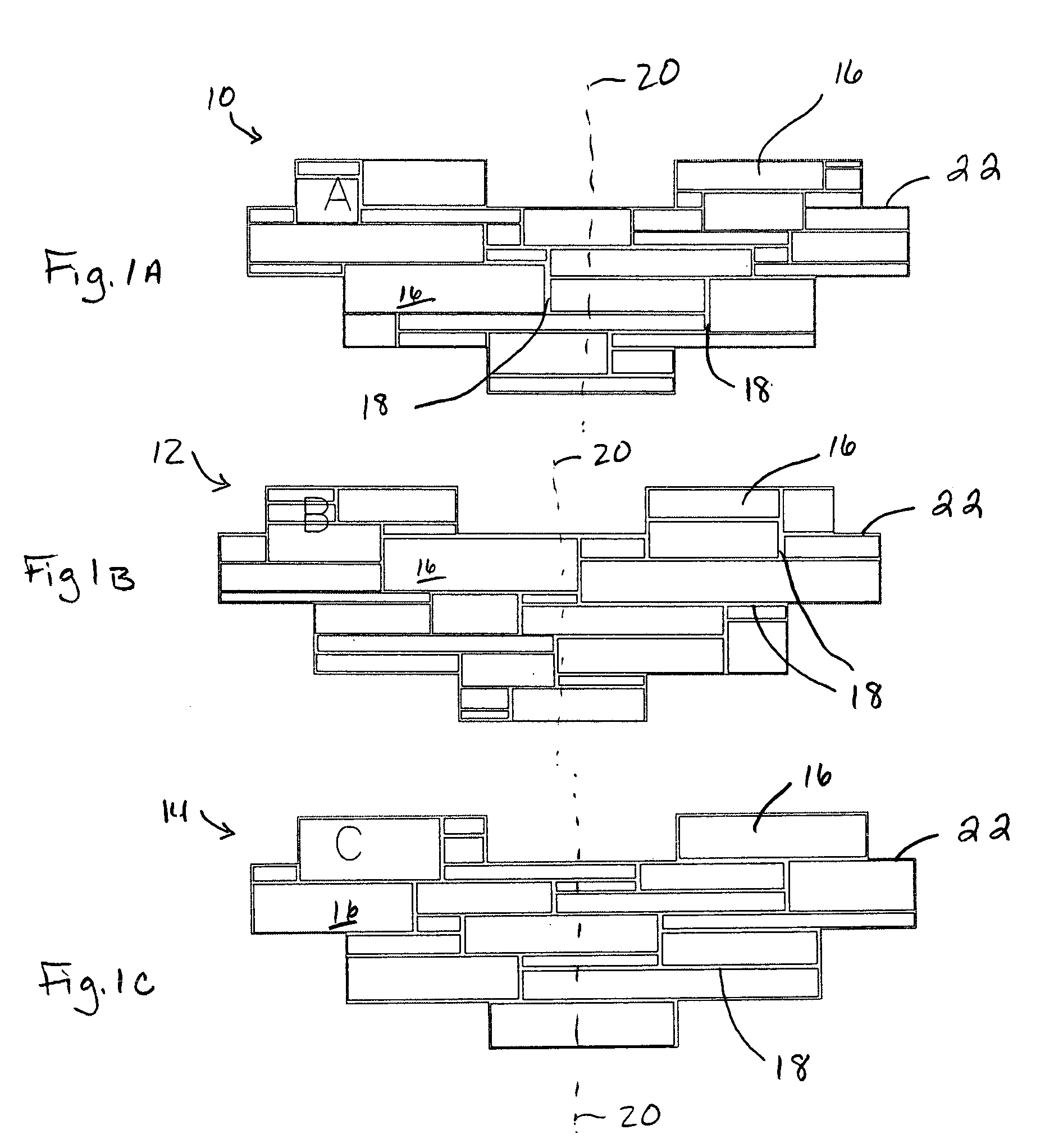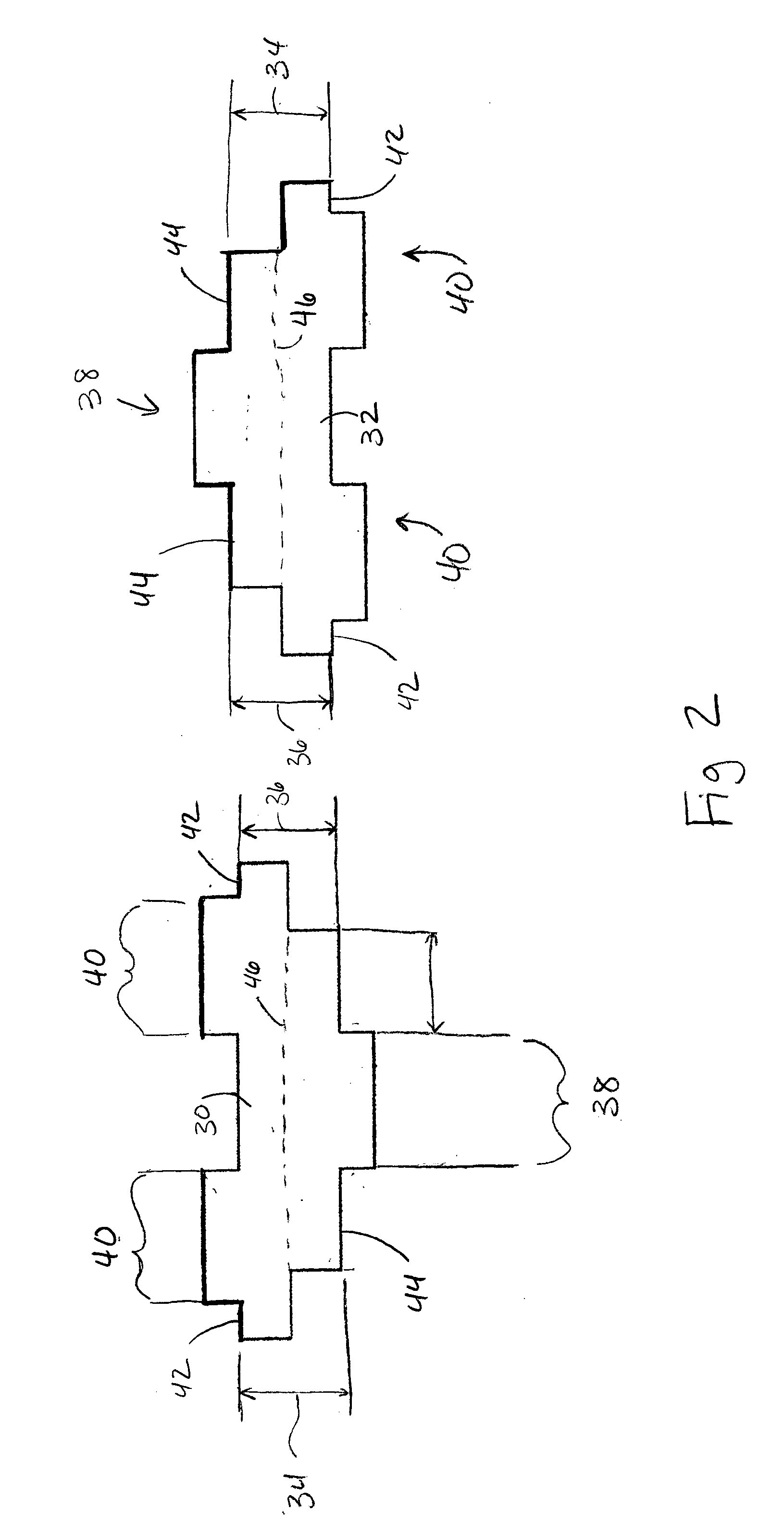Precast concrete veneer panel system
a veneer and precast concrete technology, applied in the field of veneer systems, can solve the problems of difficult wall construction, high labor intensity, difficult to make the wall, etc., and achieve the effect of easy interconnection vertically and horizontally
- Summary
- Abstract
- Description
- Claims
- Application Information
AI Technical Summary
Benefits of technology
Problems solved by technology
Method used
Image
Examples
Embodiment Construction
[0037]FIGS. 1A-1C illustrate a first concrete veneer panel 10, a second concrete veneer panel 12, and a third concrete veneer panel 14. The concrete veneer panels 10, 12, 14 comprise a plurality of simulated cut stone regions 16 surrounded by simulated mortar regions 18. Each concrete veneer panel 10, 12, 14 comprises twenty sides and has an axis of symmetry 20 which results in the concrete veneer panels 10, 12, 14 having “mirror” symmetry. In addition to the mortar regions 18, the outer edges of the panels 10, 12, 14 comprises a half mortar region 22. The half mortar region 22 is necessary so that when to panels 10, 12, 14 are placed adjacent each other, the two half mortar regions 22 combine to form a single mortar region equal to the simulated mortar regions 18.
[0038] The veneer panels 10, 12, 14 are designed for application to a wall surface to create a wall which appears to be made of cut stone. To create the wall surface, several veneer panels 10, 12, 14 are attached to a wal...
PUM
 Login to View More
Login to View More Abstract
Description
Claims
Application Information
 Login to View More
Login to View More - R&D
- Intellectual Property
- Life Sciences
- Materials
- Tech Scout
- Unparalleled Data Quality
- Higher Quality Content
- 60% Fewer Hallucinations
Browse by: Latest US Patents, China's latest patents, Technical Efficacy Thesaurus, Application Domain, Technology Topic, Popular Technical Reports.
© 2025 PatSnap. All rights reserved.Legal|Privacy policy|Modern Slavery Act Transparency Statement|Sitemap|About US| Contact US: help@patsnap.com



